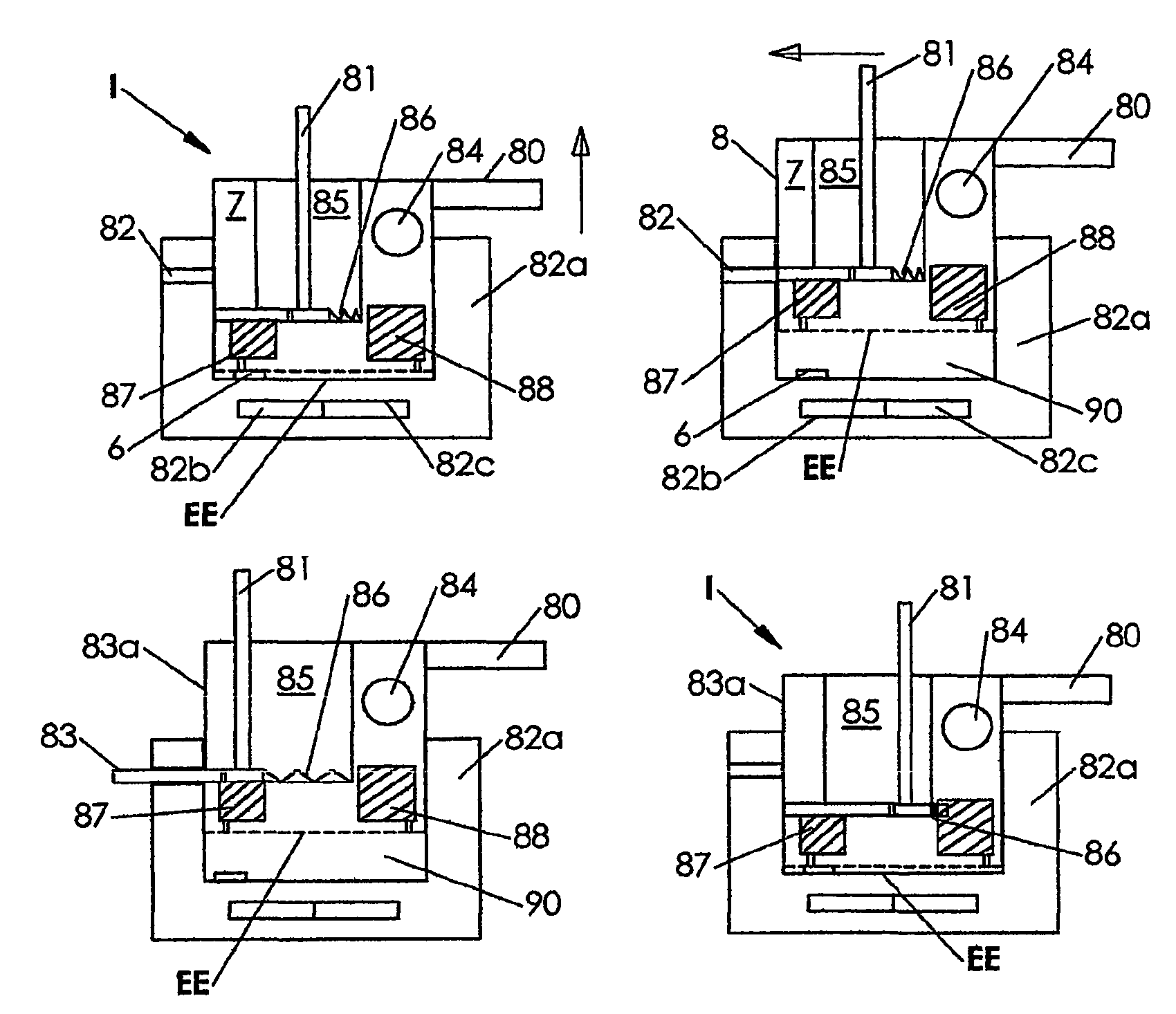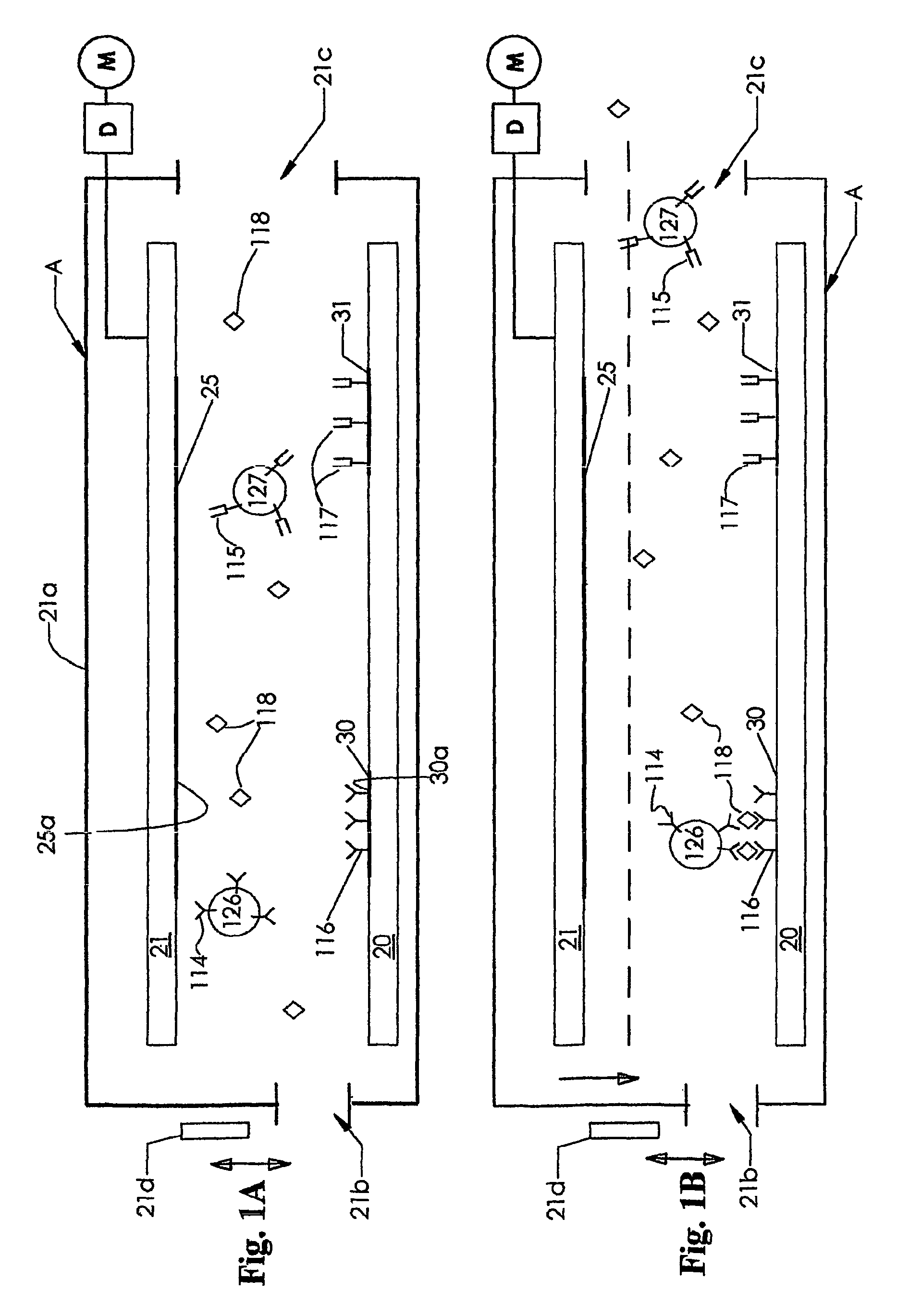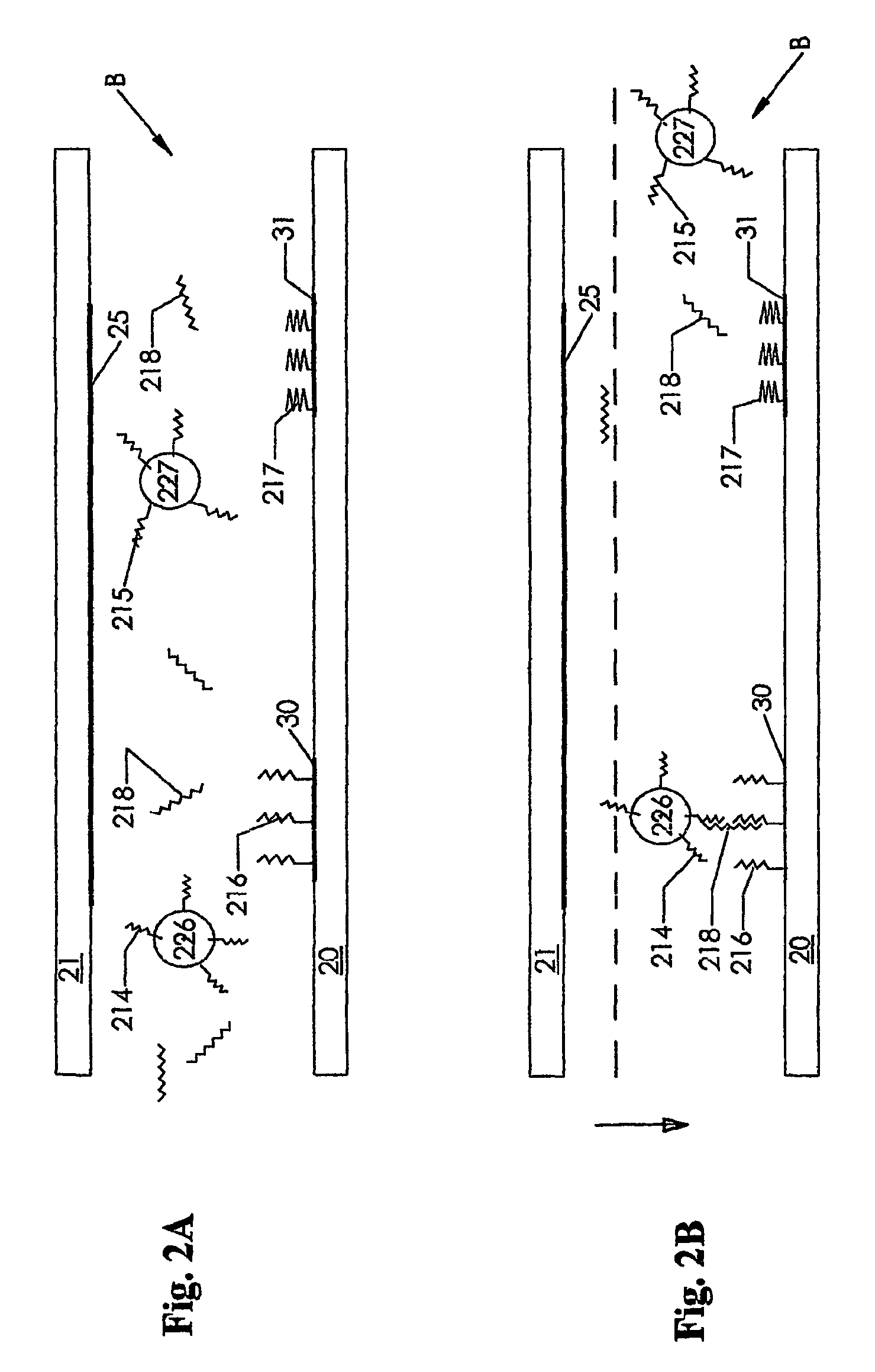Diagnostic instrument with movable electrode mounting member and methods for detecting analytes
- Summary
- Abstract
- Description
- Claims
- Application Information
AI Technical Summary
Benefits of technology
Problems solved by technology
Method used
Image
Examples
first embodiment
[0084]FIG. 1 depicts an instrument A including a pair of conductive electrodes 25 and 30, respectively mounted on insulator base support members 21 and 20. The electrodes 25 and 30 have substantially flat, planar surfaces 25a and 30a facing each other and each lying in different parallel planes. These electrodes 25 and 30 are directly opposed to each other vertically, and each have an area that exceeds about 0.5 square micrometer, and typically, each have an area of from about 10 square micrometers to about 10 square millimeters. The electrodes 25 and 30 are shown in a spaced apart position in FIG. 1A and, after introducing a sample and then removing unbound material from between the electrodes 25 and 30, moved to the dotted line position shown in FIG. 1B. As shown in FIG. 1B schematically, the electrodes 25 and 30 are brought into close proximity, almost but no t quite touching. Typically, the distance between the electrodes 25 and 30, when in the position shown in FIG. 1A, is from...
second embodiment
[0089]The second embodiment of this invention, the instrument B shown in FIG. 2, is similar to that shown in FIG. 1, but the housing 21a and motor M and drive mechanism D are not shown. This embodiment is a schematic representation of a DNA test. The electrodes 30 and 31 are coated with different probes, that is binding agents, respectively probes 216 and 217. The analyte or target 218 is able to bind with the probe 216 as well as with a probe 214 on the surface of the electrically readable particle 226. The probes 215 and 217 do not bind with the target 218. As discussed above in connection with FIGS. 1A and 1B, after binding of the target 218, unbound material is removed from the space between the electrodes 25 and 30 and the electrodes are moved towards each other and a detection circuit is then activated.
[0090]FIGS. 2C through 2G schematic represent another DNA test. In accordance with one aspect of this invention, as shown in FIGS. 2C through 2G, the conductive particles may be...
third embodiment
[0092]In FIGS. 3A and 3B, a competitive or inhibitory assay is illustrated using a third embodiment of this invention, the instrument C. The instrument C is similar to that shown in FIG. 1, but the housing 21a and motor M and drive mechanism D are not shown. In this third embodiment, analogs of analytes 316 and 317 are attached respectively to the surfaces of the electrodes 30 and 31, respectively. In the presence of the analyte 118 in the sample, binding to the electrically readable particle 126 is diminished. Failure of the particle 126 to bind to the first assay site due to the presence of the analyte 118 is a n indication that the analyte 118 is in the sample and the lack of binding will be detected by a detection circuit. In contrast, the particle 127 is bound to the analog 317 on the electrode 31 at the second assay site.
[0093]FIGS. 3C and 3D depict the particle 126 with the analog of the analyte 316 on the surface of the particle and the binding agents 116 on the electrode 30...
PUM
 Login to View More
Login to View More Abstract
Description
Claims
Application Information
 Login to View More
Login to View More - R&D
- Intellectual Property
- Life Sciences
- Materials
- Tech Scout
- Unparalleled Data Quality
- Higher Quality Content
- 60% Fewer Hallucinations
Browse by: Latest US Patents, China's latest patents, Technical Efficacy Thesaurus, Application Domain, Technology Topic, Popular Technical Reports.
© 2025 PatSnap. All rights reserved.Legal|Privacy policy|Modern Slavery Act Transparency Statement|Sitemap|About US| Contact US: help@patsnap.com



